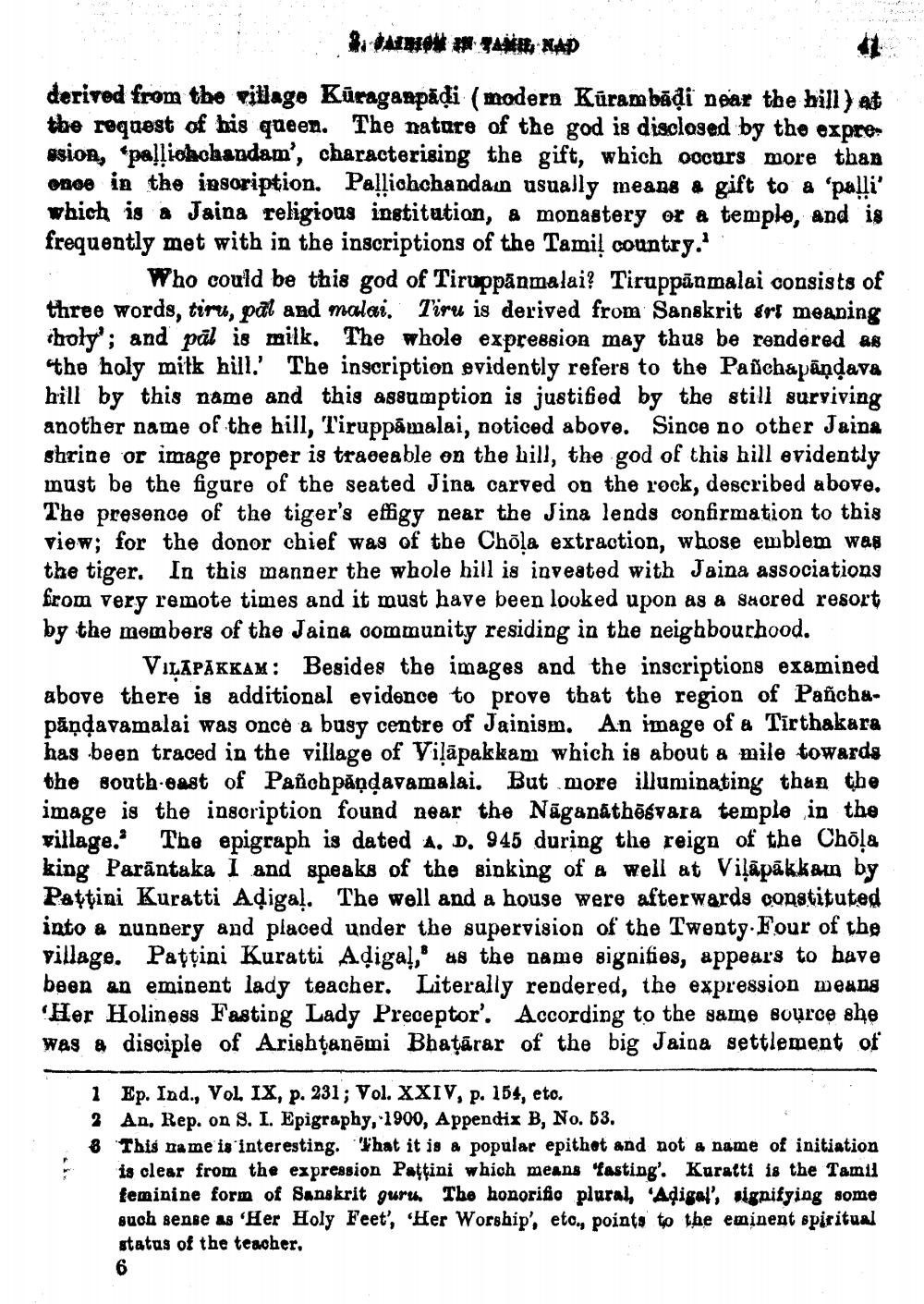________________
S. GAINION IN TAMIL NAD
derived from the village Kuraganpaḍi (modern Kurambadi near the hill) at the request of his queen. The nature of the god is disclosed by the expre ssion, palliohchandam', characterising the gift, which occurs more than ence in the insoription. Pallichchandam usually means a gift to a 'palli' which is a Jaina religious institution, a monastery or a temple, and is frequently met with in the inscriptions of the Tamil country.'
Who could be this god of Tiruppanmalai? Tiruppanmalai consists of three words, tiru, pal and malai. Tiru is derived from Sanskrit srt meaning holy; and pal is milk. The whole expression may thus be rendered as the holy milk hill.' The inscription evidently refers to the Pañchapāṇḍava hill by this name and this assumption is justified by the still surviving another name of the hill, Tiruppamalai, noticed above. Since no other Jaina shrine or image proper is traceable on the hill, the god of this hill evidently must be the figure of the seated Jina carved on the rock, described above. The presence of the tiger's effigy near the Jina lends confirmation to this view; for the donor chief was of the Chōla extraction, whose emblem was the tiger. In this manner the whole hill is invested with Jaina associations from very remote times and it must have been looked upon as a sacred resort by the members of the Jaina community residing in the neighbourhood.
VILAPAKKAM: Besides the images and the inscriptions examined above there is additional evidence to prove that the region of Pañchapāṇḍavamalai was once a busy centre of Jainism. An image of a Tirthakara has been traced in the village of Vilapakkam which is about a mile towards the south-east of Pañchpaṇḍavamalai. But more illuminating than the image is the inscription found near the Naganathēsvara temple in the village.* The epigraph is dated A. D. 945 during the reign of the Chōla king Parantaka I and speaks of the sinking of a well at Vilapakkam by Pattini Kuratti Adigal. The well and a house were afterwards constituted into a nunnery and placed under the supervision of the Twenty. Four of the village. Pattini Kuratti Adigal, as the name signifies, appears to have been an eminent lady teacher. Literally rendered, the expression means 'Her Holiness Fasting Lady Preceptor'. According to the same source she was a disciple of Arishtanēmi Bhatarar of the big Jaina settlement of
1 Ep. Ind., Vol. IX, p. 231; Vol. XXIV, p. 154, etc.
2 An. Rep. on S. I. Epigraphy, 1900, Appendix B, No. 53.
8 This name is interesting. That it is a popular epithet and not a name of initiation is clear from the expression Patţini which means 'fasting'. Kuratti is the Tamil feminine form of Sanskrit guru. The honorific plural, 'Adigal', signifying some such sense as 'Her Holy Feet', 'Her Worship', etc., points to the eminent spiritual status of the teacher.
6




